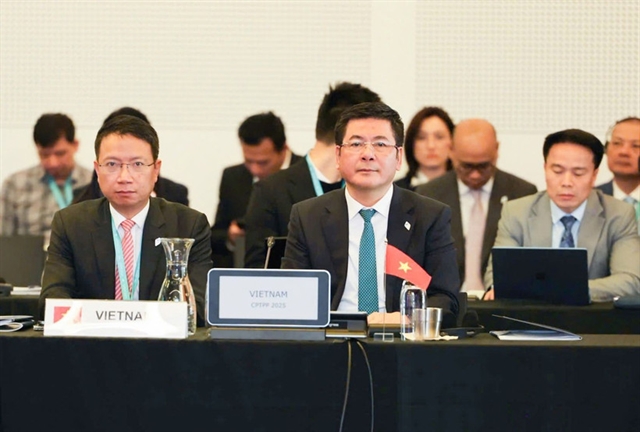.jpg) Society
Society

The regional minimum wage for 2018 is expected to increase by 6.5 per cent, equal to VNĐ180,000-230,000 (US$8-10) a month, believed to be the lowest increase ever.
 |
| The regional minimum wage for 2018 is expected to increase by 6.5 per cent, equal to VNĐ180,000-230,000 (US$8-10) a month, believed to be the lowest increase ever. — VNA/VNS Photo |
HÀ NỘI — The regional minimum wage for 2018 is expected to increase by 6.5 per cent, equal to VNĐ180,000-230,000 (US$8-10) a month, believed to be the lowest increase ever.
The increase was announced on Monday after the National Wage Council concluded its third discussion on the regional minimum wage for 2018, with a consensus reached between employer and labour representatives.
The proposed rate will be submitted to the Government for final approval.
Minimum wage in Việt Nam is determined regionally and on a per month basis, with the four regions ranked according to their socio-economic development.
Region I covers the urban parts of Hà Nội and HCM City. Region II applys to rural areas of Hà Nội and HCM City, along with the urban regions of Cần Thơ City, Đà Nẵng City and Hải Phòng City. Region III comprises provincial cities and the districts of Bắc Ninh Province, Bắc Giang Province, Hải Dương Province and Vĩnh Phúc Province, while region IV consists of the remaining localities.
The 2018 regional minimum wage will increase from the current VNĐ3.75 million ($165) to VNĐ3.98 million ($175) for region I, from VNĐ3.32 million ($146) to VNĐ3.53 million ($155) for region II, from VNĐ2.9 million ($127) to VNĐ3.09 million ($136) for region III and VNĐ2.58 million ($113) to VNĐ2.76 million ($121) for the region IV.
Doãn Mậu Diệp, Deputy Minister of Labour, Invalid and Social Affairs cum Chairman of the National Wage Council, said the council proposed two options for the council’s members to vote on. The first was an increase of 7 per cent, and the second was 6.5 per cent, with eight of the 14 members voting for the second option, he said.
Although the third discussion closed with an agreement for the 6.5 per cent increase, some council members weren’t pleased.
Mai Đức Chính, vice chairman of the Việt Nam General Confederation of Labour (VGCL) a representative of labourers, said “I feel unsatisfied with the increase rate.”
With this increase, the roadmap to raise the minimum wage to serve the minimum standard of living by 2020 would fall behind schedule, Chính said.
Hoàng Quang Phòng, vice chairman of the Việt Nam Chamber of Commerce and Industry (VCCI) – a representative of employers, also lambasted the increase.
Phòng said the minimum wage should balance the improvement of labourers’ living standards and companies’ development.
The increase rate could go beyond companies’ ability to pay, as they need money to boost their development, he said.
According to Phòng, there were more than 73,000 new companies established in the first seven months of this year while 50,000 others shut down.
“This means that for every three new companies that are established, two old companies closed their door,” he added.
“We do not want to let this situation continue,” he said.
Additionally, living standards depend on many factors, not only the regional minimum wage, he said.
Labourers should improve their skills so they can earn bonuses from employers to improve their living standards instead of waiting for the yearly increase of minimum wage, he said.
In response to comments from the two representatives, Diệp, chairman of the national wage council said with the increase of 6.5 per cent, the minimum wage was set to serve 92-96 per cent of the minimum standard of living for labourers.
Diệp said the gap between the minimum wage and the minimum standard of living was a common issue in many countries, including the Americas, not only in Việt Nam.
Previously, at the first discussion on the 2018 regional minimum wage, in June 27, the VGCL representative submitted an increase of 13.3 per cent and the VCCI’s representative proposed no increase. The two sides could not reach a deal in the first discussion due to a wide gap.
In the second meeting, held on July 28, although the gap was reduced, the discussion still closed without a consensus. The VGCL proposed an increase of 8 per cent and the VCCI wanted 5 per cent.
The regional minimum wage is increased yearly by the Government to meet the minimum standard of living for domestic labourers. —VNS


.jpg)

